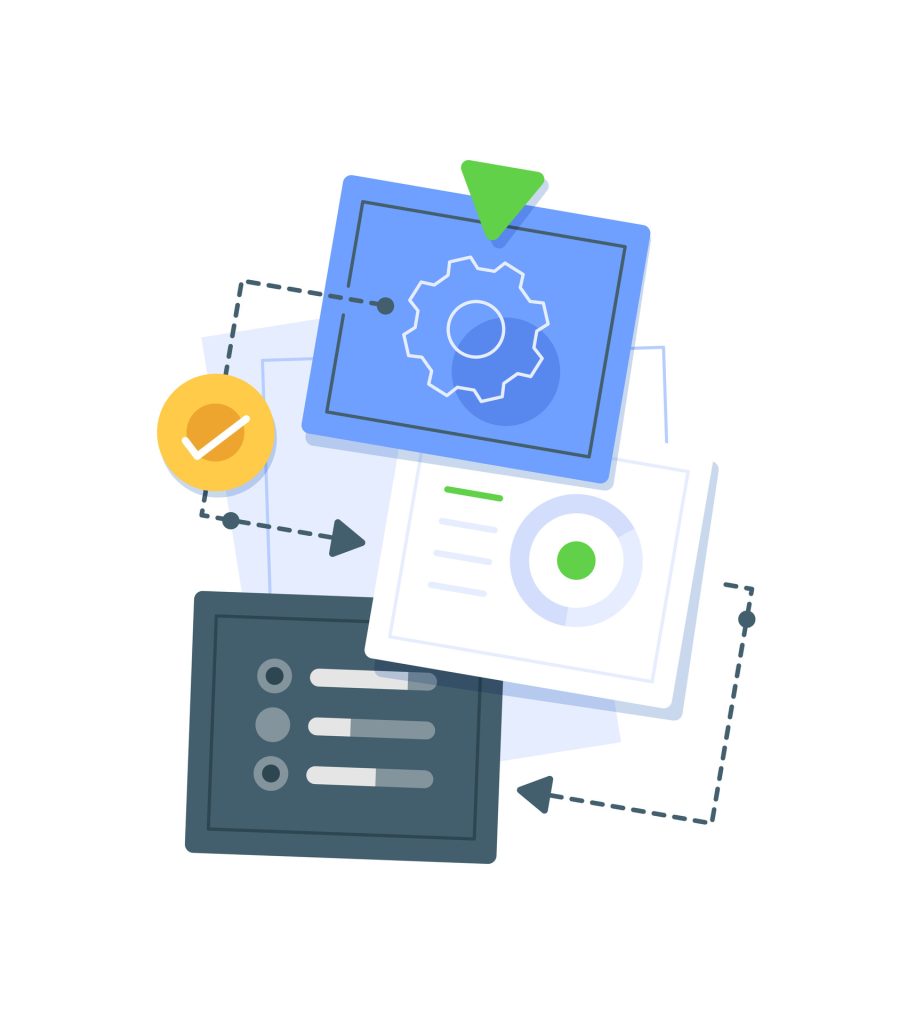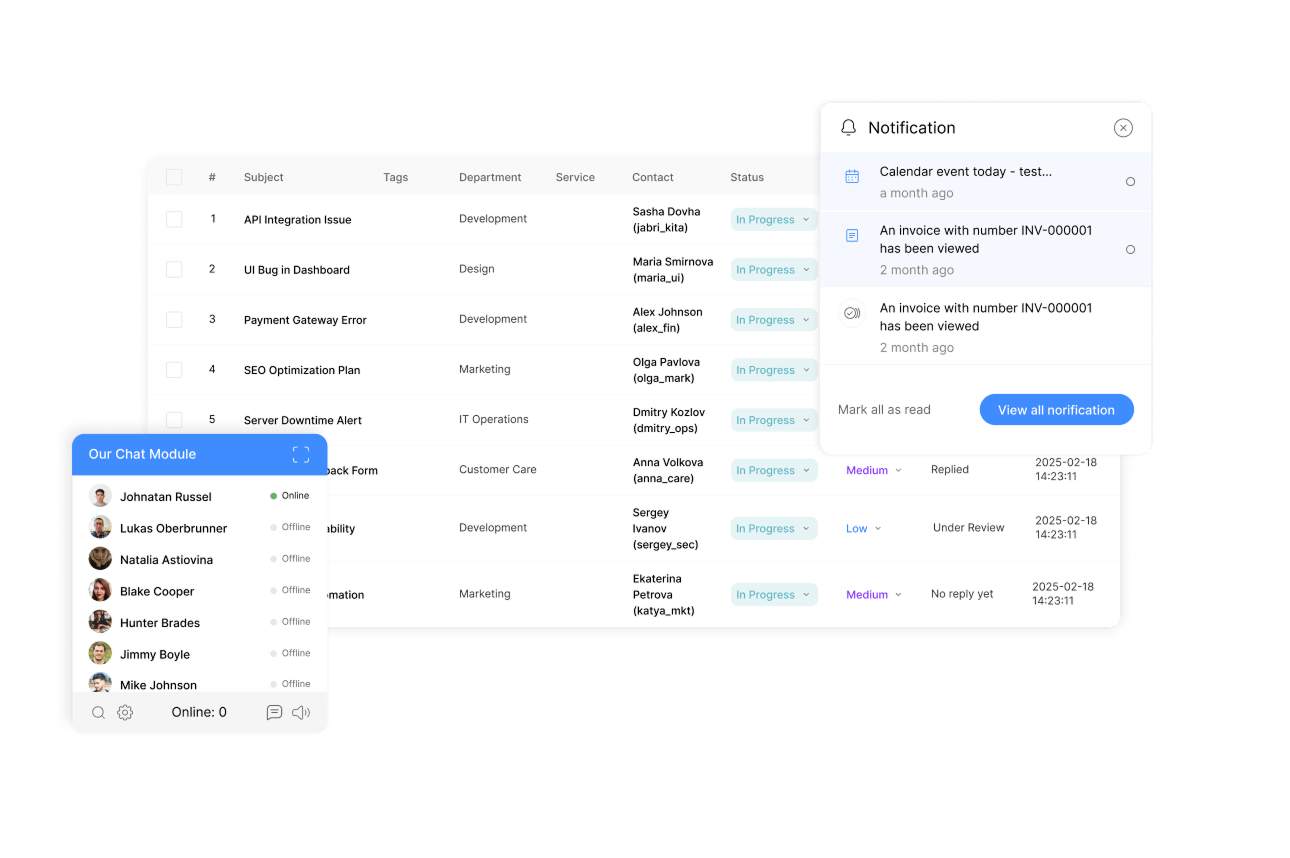Automated Lead Capture to Enhance Your Strategy

In today’s fast-paced business landscape, capturing and managing leads efficiently is crucial for driving growth and staying competitive. The process of gathering key information from potential customers is at the heart of every successful marketing strategy.
However, manual data entry for lead collection can be a significant drain on resources, taking away from the time that could be spent on more strategic tasks. Businesses generate leads from multiple channels, including website forms, email communications, and social media interactions.
By leveraging the right tools and automation, companies can instantly collect, organize, and route lead information to the appropriate teams, enhancing their overall lead management process. This not only saves time but also reduces the risk of human error, ensuring that valuable lead data is accurately captured and utilized.
Key Takeaways
- Efficient lead collection is critical for business growth and competitiveness.
- Manual data entry for lead collection can be resource-intensive and prone to errors.
- Streamlining lead collection across multiple channels can enhance lead management.
- Leveraging the right tools and automation can improve the accuracy and utilization of lead data.
- Instantly collecting, organizing, and routing lead information can save significant time.
The Challenge of Manual Lead Entry

The process of manually entering lead information is not only labor-intensive but also prone to errors. Businesses that rely on manual data entry for their leads often find themselves bogged down by the sheer volume of work, leading to inefficiencies and potential losses in sales and customer engagement.
Time-consuming Data Entry Processes
Manual data entry is a tedious task that consumes a significant amount of time and resources. By automating lead data collection, businesses can redirect their efforts towards more strategic activities, such as enhancing marketing strategies and improving customer relationships. According to CRM automation insights, automating data collection and behavior analysis can help businesses identify higher-quality leads.
Risk of Human Error and Data Loss
Manual data entry introduces significant risks, including errors in contact information, duplicate entries, and incomplete fields. These mistakes can directly impact sales effectiveness and conversion rates. For instance, incorrect email addresses or phone numbers can result in the permanent loss of contact with potentially valuable leads. Moreover, data inconsistency from manual entry can create downstream problems for marketing automation and personalization efforts.
- Manual data entry is prone to errors, with studies indicating error rates between 1-4% even among experienced professionals.
- Common errors include typos in contact information and incorrect categorization of lead sources or interests.
- These errors can lead to lost opportunities and reduced conversion rates.
What is Automated Lead Capture?

Automated lead capture is revolutionizing the way businesses collect and manage lead information. This process involves using technology to gather and organize data from various sources, eliminating the need for manual entry.
Definition and Core Functionality
Automated lead capture refers to the use of software and tools to automatically collect and process lead data from multiple channels, including website forms, email communications, and social media platforms. The core functionality of these systems is to streamline the lead collection process, reducing the risk of human error and data loss. By automating this process, businesses can ensure that their lead data is accurate, up-to-date, and readily available for sales and marketing teams.
Types of Lead Information Typically Collected
The types of information collected through automated lead capture systems can vary, but typically include:
- Demographic data such as names, job titles, company information, industry, company size, and geographic location.
- Contact details like email addresses, phone numbers, and social media profiles, which are crucial for follow-up and sales outreach.
- Behavioral data, including website pages visited, content downloaded, webinars attended, and time spent engaging with specific materials, providing insights into customer behavior.
- Lead source attribution data, tracking the marketing campaigns, keywords, or referral sources that generated each lead.
- Engagement metrics such as email open rates, click-through rates, form completion times, and repeat visit patterns, which help in qualifying and prioritizing leads.
By capturing a wide range of lead information, businesses can gain a deeper understanding of their customers’ needs and preferences, ultimately enhancing their sales and marketing strategies.
Benefits of Eliminating Manual Lead Entry
Streamlining lead capture through automation can boost overall efficiency. By leveraging automated lead capture solutions like Leadcenter.ai, businesses can instantly collect leads from various sources such as calls, forms, email forwarding, and calendars.
Increased Efficiency and Productivity
Automated lead capture eliminates the need for manual data entry, freeing up valuable time for sales teams to focus on high-value tasks. With Leadcenter.ai, businesses can capture leads as soon as they show interest, increasing the chances of conversion. This instant capture capability enables sales representatives to respond promptly, thereby enhancing customer engagement.
Improved Data Accuracy and Quality
Manual data entry is prone to human error, which can lead to inaccurate or lost data. Automated lead capture solutions minimize this risk by ensuring that lead information is accurately captured and stored. Leadcenter.ai’s real-time notifications via email and SMS ensure that sales teams are immediately informed of new leads, reducing the likelihood of data loss or miscommunication.
Faster Response Times to Potential Customers
Research has shown that responding quickly to leads significantly improves conversion rates. With automated lead capture, businesses can respond to leads within minutes, rather than hours or days. This rapid response capability is crucial in today’s fast-paced sales environment, where timely engagement can make all the difference in converting a lead into a customer. Additionally, leveraging onceclick conversion strategies allows businesses to streamline the purchasing process, reducing friction and enhancing the customer experience. By integrating these strategies with automated lead capture, companies can maximize their chances of converting inquiries into sales. As a result, firms that prioritize swift and efficient responses are better positioned to outperform their competition.
| Benefits | Description | Impact |
|---|---|---|
| Increased Efficiency | Automated lead capture reduces manual data entry | Frees up sales teams to focus on high-value tasks |
| Improved Data Accuracy | Minimizes human error in data entry | Ensures accurate and reliable lead information |
| Faster Response Times | Enables rapid response to leads | Significantly improves conversion rates |
Key Sources for Automated Lead Capture

Businesses can significantly enhance their lead capture capabilities by leveraging multiple key sources. By integrating various tools and platforms, companies can streamline their lead generation process, ensuring they capture high-quality leads efficiently.
Web Forms and Landing Pages
Web forms and landing pages are fundamental sources for automated lead capture. These tools allow businesses to collect visitor information in exchange for valuable content or offers. By optimizing form fields and landing page design, companies can increase conversion rates and capture more leads. Effective use of web forms and landing pages enables businesses to gather crucial data, such as contact information and preferences, which can be seamlessly integrated into their CRM systems.
Email Communications
Email communications are another vital source for automated lead capture. By incorporating lead capture mechanisms within email campaigns, businesses can gather responses and feedback from potential customers. Email marketing automation tools can help track engagement metrics, such as opens and clicks, providing valuable insights into lead behavior and interest. This data can be used to nurture leads and move them through the sales funnel more effectively.
Social Media Platforms
Social media platforms offer a rich source of leads through various engagement metrics and advertising tools. By leveraging social media analytics, businesses can identify potential leads based on their interactions with the brand. Social media advertising platforms, such as Facebook Ads, allow for precise targeting and lead capture through lead forms and messaging apps. This enables companies to capture leads directly within the social media ecosystem.
Third-Party Integrations
Third-party integrations play a crucial role in expanding lead capture capabilities. By connecting specialized tools with core CRM and marketing automation platforms, businesses can tap into a broader range of lead sources. For instance, webinar platforms like Zoom and event management systems like Eventbrite can automatically transfer attendee information to lead databases. Survey tools and chat platforms also serve as sophisticated lead capture mechanisms, gathering valuable data while engaging potential customers.
Essential Features of Automated Lead Capture Solutions

The key to successful lead management lies in the features of the automated lead capture solutions. These solutions are designed to streamline the lead capture process, ensuring that businesses can effectively manage and convert leads into sales.
Lead Scoring Capabilities
Lead scoring is a critical feature that enables businesses to assign scores to leads based on their behavior and engagement. This helps sales teams to focus on high-quality leads that are more likely to convert. By leveraging lead scoring, businesses can enhance their sales strategies and improve conversion rates.
Integration Flexibility
Automated lead capture solutions should offer seamless integration with existing CRM systems and marketing tools. This flexibility ensures that businesses can easily incorporate lead capture into their existing workflows, reducing manual data entry and minimizing errors.
Real-Time Notifications
Real-time notifications are essential for ensuring that sales teams can respond promptly to new leads. This feature enables businesses to stay ahead of the competition by responding quickly to potential customers, thereby increasing the chances of conversion.
Analytics and Reporting Tools
To measure the effectiveness of lead capture campaigns, businesses need advanced analytics and reporting tools. These tools provide insights into lead capture metrics, such as lead source, frequency, and number of engagements. By analyzing these metrics, businesses can optimize their marketing strategies and improve campaign performance.
- Comprehensive analytics dashboards provide visibility into lead capture performance.
- Source attribution reporting identifies high-quality lead sources.
- Conversion funnel analytics track lead progression rates.
- A/B testing capabilities enable data-driven optimization.
- Custom report builders facilitate tailored views for stakeholders.
Top Automated Lead Capture Solutions
Effective lead management is the backbone of any successful business strategy. With numerous automated lead capture solutions available, businesses can now streamline their lead management processes, enhancing efficiency and productivity. These solutions not only capture leads but also enable businesses to categorize and prioritize them based on various parameters. By implementing effective lead organization strategies, companies can ensure that high-value prospects receive the attention they deserve, ultimately maximizing conversion rates. Additionally, this systematic approach allows teams to analyze and refine their strategies, fostering a culture of continuous improvement. By leveraging the top lead management software solutions, companies can also gain valuable insights into customer behaviors and preferences. This data-driven approach allows for more personalized marketing strategies, ultimately leading to higher conversion rates. Additionally, integrating these tools with existing customer relationship management systems can further optimize the entire sales journey. By leveraging these tools, companies can focus on nurturing high-quality leads while minimizing time spent on unqualified prospects. Additionally, mastering advanced lead filters allows businesses to target specific demographics and behaviors, ensuring that their marketing efforts are both precise and impactful. Ultimately, this strategic approach not only boosts conversion rates but also fosters long-term customer relationships.
monday CRM
Overview
monday CRM is a versatile work operating system that offers robust CRM capabilities, including automated lead capture. It allows businesses to centralize their lead management, ensuring seamless follow-ups and conversions.
Key Features
The platform boasts advanced lead scoring and customizable workflows that cater to specific business needs. Its integration flexibility enables connections with various third-party applications, enhancing its utility.
Pros
monday CRM’s user-friendly interface and automation capabilities make it an attractive option. It also offers real-time notifications, keeping teams updated on lead activities.
Cons
Some users note that the pricing can become steep as the business grows, and certain advanced features are only available on higher-tier plans.
Zapier for Lead Management
Overview
Zapier is renowned for its automation capabilities, connecting various apps and services to streamline workflows, including lead capture and management.
Key Features
Zapier’s strength lies in its ability to automate tasks across different platforms, reducing manual labor and minimizing errors. It supports a wide range of integrations, making it highly versatile.
Pros
The platform is highly customizable, allowing businesses to create tailored automation workflows. It’s also user-friendly, requiring no coding knowledge.
Cons
One of the limitations is that complex workflows can sometimes be challenging to set up, and the cost can add up with multiple Zaps.
Leadcenter.ai
Overview
Leadcenter.ai leverages AI to enhance lead capture and qualification, providing businesses with high-quality leads and insights to boost conversion rates.
Key Features
The platform’s AI-driven approach enables advanced lead scoring and personalized engagement strategies. It integrates with various CRM systems, ensuring a seamless lead management process.
Pros
Leadcenter.ai’s AI capabilities offer deep insights into lead behavior, enabling businesses to tailor their marketing efforts effectively.
Cons
Some users find that the platform requires a learning curve to fully utilize its features, and pricing can be a concern for smaller businesses.
HubSpot Lead Management
Overview
HubSpot offers a comprehensive lead management solution, integrating various tools for capturing, tracking, and nurturing leads within its CRM platform.
Key Features
The platform includes robust analytics and reporting tools, providing insights into lead interactions and campaign effectiveness. Its lead scoring features help prioritize follow-ups.
Pros
HubSpot’s all-in-one platform simplifies lead management, offering a unified view of customer interactions and sales pipeline.
Cons
Some businesses may find the pricing and the vast array of features overwhelming, particularly if they are looking for a more focused lead capture solution.
Implementing an Automated Lead Capture Strategy
An automated lead capture strategy is essential for organizations aiming to improve their lead management capabilities. By leveraging the right tools and integrating them with existing systems, businesses can significantly enhance their sales pipeline management.
Defining Your Lead Capture Objectives
To implement a successful automated lead capture strategy, it’s crucial to define clear objectives. This involves identifying the types of leads you want to capture, understanding your sales team’s needs, and determining the key performance indicators (KPIs) to measure success. By setting specific goals, you can tailor your lead capture approach to meet your business requirements.
Selecting the Right Tools for Your Business
Choosing the appropriate tools is vital for effective lead capture. For instance, monday CRM integrates with Facebook Ads to manage campaigns, while SurveyMonkey and Typeform can help engage leads and capture lead data. Clearbit is another valuable tool that helps manage lead data effectively. When selecting tools, consider their compatibility with your existing systems and their ability to meet your defined objectives.
Integration with Existing Systems
Seamless integration with existing systems is critical for a cohesive lead capture process. This involves mapping out the complete data flow required between systems, determining the best integration approach (native, middleware, or custom API), and implementing data standardization protocols. A well-planned integration ensures that lead data is consistent and readily available across all platforms.
| Integration Approach | Description | Benefits |
|---|---|---|
| Native Integrations | Direct connections between tools and CRM | Easy to set up, streamlined data flow |
| Middleware Platforms | Intermediaries that connect multiple tools | Flexible, scalable, and adaptable |
| Custom API Connections | Tailored integrations for specific needs | Highly customizable, precise data control |
Measuring Success in Automated Lead Capture

Measuring the success of automated lead capture is vital for optimizing its performance. To achieve this, businesses must focus on key performance indicators and continually optimize their lead capture process.
Key Performance Indicators to Track
To assess the effectiveness of automated lead capture, companies should monitor specific metrics. These include conversion rates, lead quality, and the efficiency of the capture process. By analyzing these data points, businesses can identify areas for improvement.
Optimizing Your Lead Capture Process
Optimization is an ongoing process that involves A/B testing of different lead capture tools and strategies. By leveraging data analytics and reporting tools, businesses can gauge engagement and conversion rates, making adjustments as needed to enhance their lead capture process.
Some effective strategies for optimization include analyzing drop-off points in multi-step capture processes and refining lead scoring models based on conversion outcomes. By adopting a data-driven approach, businesses can significantly improve the effectiveness of their automated lead capture systems.
Conclusion
By embracing Automated Lead Capture, companies can significantly improve their lead management processes. This technology transforms how businesses collect and process prospect information, saving time and resources while improving data accuracy and response times. For more information on effective lead management solutions, explore our resources.
FAQ
What is the primary benefit of using automated lead management systems?
How does automated lead capture improve data accuracy?
What types of lead information can be collected through automated lead capture?
How do automated lead capture solutions integrate with existing systems?
What key performance indicators should be tracked to measure the success of automated lead capture?
Can automated lead capture solutions be customized to meet specific business needs?
How do automated lead capture solutions handle data from various sources?

